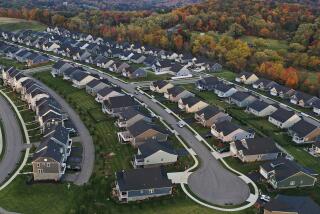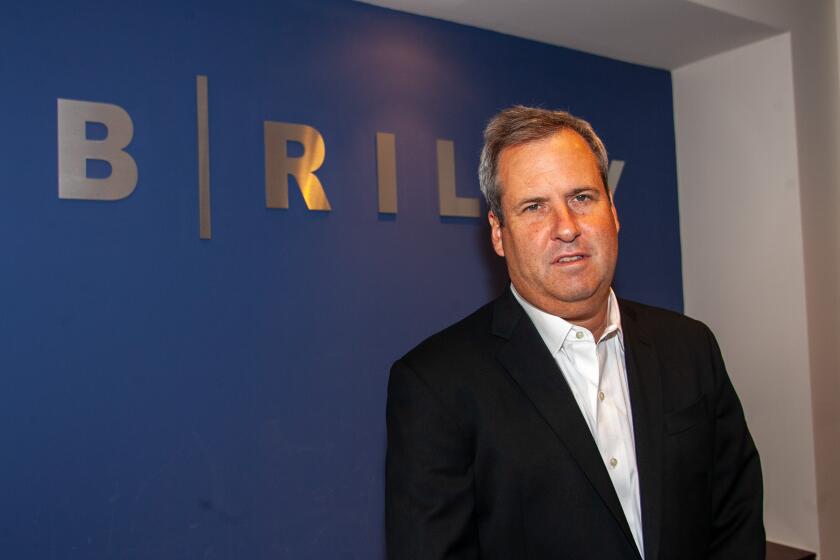Making FHA relevant again is overseer’s goal
Loans from the Federal Housing Administration were once a ticket to homeownership for millions of middle- and low-income buyers.
Now, FHA loans are costly, burdensome and completely antiquated. Or so says Alphonso Jackson, secretary of Housing and Urban Development, who oversees the program.
Most homes in populous states, such as California, are so expensive that they don’t even qualify for FHA loans. The agency’s red tape is legendary, and its required mortgage insurance fees aren’t competitive with the private market.
“California is the poster child for FHA nonperformance,” Jackson said. “We have effectively priced teachers, nurses, police and firefighters out of our market.”
Jackson, an ebullient Texan who happily interrupts an interview to talk to his “grandbaby” on the phone, says there are two main problems with FHA loans in today’s market: The costs are high and the loan limits are low.
He’s pushing for legislation that would cut costs and boost limits to make FHA loans viable even in cities where housing prices are lofty, such as Los Angeles and New York.
“No one thought about trying to change the FHA,” he said. “The more we didn’t think about it, the more people went to sub-prime lenders and the more complaints we got about predatory lending.”
The FHA, founded during the Great Depression, has had a pivotal role in financing underserved borrowers -- first-time homeowners and people with spotty credit histories or low down payments, said Jeff Lazerson, president of Mortgage Grader, a Web-based brokerage.
Because the agency adds a significant mortgage insurance premium on top of the interest rate that borrowers pay, the FHA doesn’t fund a lot of conventional mortgages for good credit risks. Those borrowers can simply find better deals elsewhere. But in the past, the agency provided a viable alternative to those who would otherwise be forced to go to high-cost, sub-prime lenders.
The FHA “always gave the consumer the benefit of the doubt,” Lazerson said.
“They’d finance people with pretty rough credit, people with nonoccupant co-borrowers like parents. They were powerful consumer advocates and had real strengths.”
However, in the last several years, the agency’s loan limits, which range from $200,000 to $362,790, have become increasingly out of step with rising home prices, Lazerson said.
The median price in Los Angeles County was $516,000 at year-end 2006, according to DataQuick Information Systems. Because the FHA is a bureaucracy that required brokers to perform costly audits and file lots of paperwork, when the agency’s loan limits didn’t address most borrowers’ needs, mortgage brokers simply dropped the loans from their lineup, Lazerson said.
Although this problem is most pronounced in high-cost areas such as Los Angeles, San Francisco and New York, FHA loan limits are well below median home prices all over the country, Jackson said.
The result: The FHA, which financed 1.3 million homes in 2003, made just 425,493 loans in 2006.
In high-cost states, such as California, the decline is even more pronounced. Almost 100,000 homeowners there took out loans through FHA in 2003, but just 4,443 homeowners did so in 2006, the agency said.
Jackson wants to revamp FHA rules to allow the agency to finance loans up to the median price in the area of the purchase. That would vastly increase the number of borrowers who could qualify for the loans.
In addition, low-down-payment loans require mortgage insurance, and the FHA currently charges the same premium to everyone. Under a proposed reform measure, the agency would create a risk-based premium structure, charging more to high-risk borrowers and less to those with better credit or who put more of their own money down.
The reform Jackson is proposing is almost identical to one that passed the House of Representatives last year. However, last year’s reform stalled in the Senate because it would have allowed the agency to finance 100% of the home’s purchase price. A 3% down payment is currently required for FHA loans.
Some senators objected to full financing, arguing that borrowers need to have skin in the game. In retrospect, Jackson agrees, but he still calls the 3% requirement inflexible. He’d like to change it to 1% or 2% of the loan amount.
And Jackson wants to eliminate much of the red tape that’s involved in applying for FHA loans.
“The process is extremely ponderous,” he said. “We are going to do everything in our power to make sure the person applying can afford a home, but we want to eliminate the hoops that we’ve been making borrowers jump through.”
Such a reform is important, Jackson said, because too many people have fallen into the hands of predatory lenders.
The measure had considerable bipartisan support last year, and he is convinced that Congress is committed enough to low- and moderate-income buyers to pass it this year.
“Homeownership is the American dream,” Jackson said. “I’m not foolish enough to believe that everyone can own a home. But for the people who can, we ought to do everything we can to help.”
--
Kathy M. Kristof welcomes your comments. Write to Personal Finance, Business Section, Los Angeles Times, 202 W. 1st St., Los Angeles, CA 90012, or e-mail kathy.kristof@latimes.com. For previous columns, visit latimes .com/kristof.
More to Read
Inside the business of entertainment
The Wide Shot brings you news, analysis and insights on everything from streaming wars to production — and what it all means for the future.
You may occasionally receive promotional content from the Los Angeles Times.










